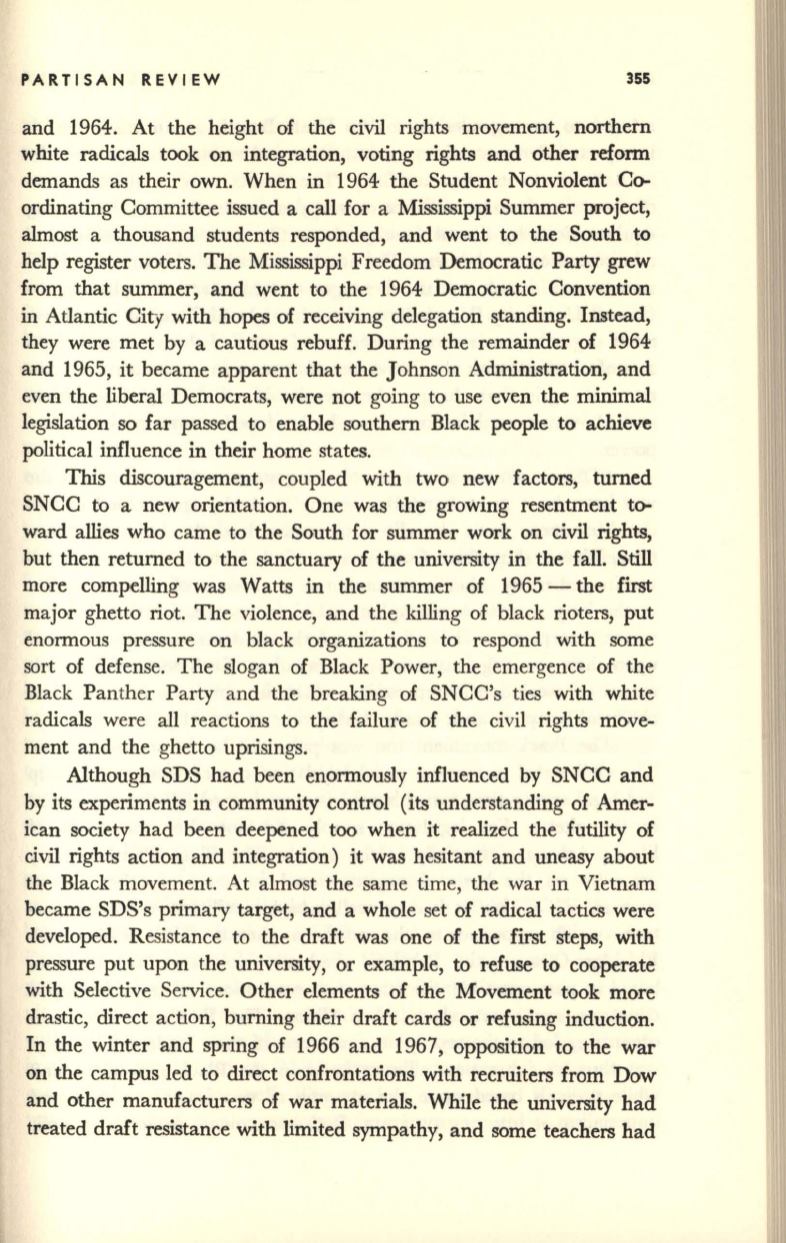
PARTISAN REVIEW
355
and 1964. At the height of the civil rights movement, northern
white radicals took on integration, voting rights and other reform
demands as their own. When
in
1964 the Student Nonviolent Co–
ordinating Committee issued a call for a Mississippi Summer project,
almost
a thousand students responded, and went to the South to
help register voters. The Mississippi Freedom Democratic Party grew
from that summer, and went to the 1964 Democratic Convention
in
Atlantic City with hopes of receiving delegation standing. Instead,
they were met by a cautious rebuff. During the remainder of 1964
and 1965, it became apparent that the Johnson Administration, and
even the liberal Democrats, were not going to use even the minimal
legislation so far passed to enable southern Black people to achieve
political influence
in
their home states.
This discouragement, coupled with two new factors, turned
SNCC to a new orientation. One was the growing resentment to–
ward allies who came to the South for summer work on civil rights,
but then returned to the sanctuary of the university in the fall. Still
more compelling was Watts in the summer of 1965 - the first
major ghetto riot. The violence, and the killing of black rioters, put
enormous pressure on black organizations to respond with some
sort of defense. The slogan of Black Power, the emergence of the
Black Panther Party and the breaking of SNCC's ties with white
radicals were all reactions to the failure of the civil rights move–
ment and the ghetto uprisings.
Although SDS had been enormously influenced by SNCC and
by its experiments in community control (its understanding of Amer–
ican society had been deepened too when it realized the futility of
civil rights action and integration) it was hesitant and uneasy about
the Black movement. At almost the same time, the war in Vietnam
became SDS's primary target, and a whole set of radical tactics were
developed. Resistance to the draft was one of the first steps, with
pressure put upon the university, or example, to refuse to cooperate
with Selective Service. Other elements of the Movement took more
drastic, direct action, burning their draft cards or refusing induction.
In the winter and spring of 1966 and 1967, opposition to the war
on the campus led to direct confrontations with recruiters from Dow
and other manufacturers of war materials. While the university had
treated draft resistance with limited sympathy, and some teachers had


